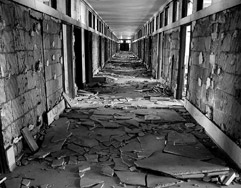more at http://scitech.quickfound.net/aviation_news_and_search.html
History of aviation in film clips set to music.
FAA film FA-905
Public domain film from the FAA, slightly cropped to remove uneven edges, with the aspect ratio corrected, and mild video noise reduction applied.
The soundtrack was also processed with volume normalization, noise reduction, clipping reduction, and/or equalization (the resulting sound, though not perfect, is far less noisy than the original).
http://creativecommons.org/licenses/by-sa/3.0/
http://en.wikipedia.org/wiki/History_of_aviation
The history of aviation has extended over more than two thousand years from the earliest attempts in kites and gliders to powered heavier-than-air, supersonic and hypersonic flight.
Experiments with gliders provided the groundwork for heavier-than-air craft, and by the early 20th century advances in engine technology and aerodynamics made controlled, powered flight possible for the first time…
The first form of man-made flying objects were kites. The earliest known record of kite flying is from around 200 BC in China, when a general flew a kite over enemy territory to calculate the length of tunnel required to enter the region. Yuan Huangtou, a Chinese prince, survived by tying himself to the kite.
Leonardo da Vinci’s (15th c.) dream of flight found expression in several designs, but he did not attempt to demonstrate his ideas by actually constructing them…
The Kongming lantern (proto hot air balloon) was known in China from ancient times. Its invention is usually attributed to the general Zhuge Liang (180–234 AD, honorific title Kongming), who is said to have used them to scare the enemy troops…
Yuan Huangtou, Ye, first manned kite glide to take off from a tower — 559…
In the 9th century, at the age of 65, the Muslim Andalusian polymath Abbas Ibn Firnas is said to have flown from the hill Jabal al-‘arus by employing a rudimentary glider. While “alighting again on the place whence he had started,” he eventually crashed and sustained injury which some contemporary critics attributed to a lack of tail. However, the only source describing the event is from the 17th century.
Between 1000 and 1010, the English Benedictine monk Eilmer of Malmesbury flew for about 200 meters using a glider (c. 1010), but he too sustained injuries. The event is recorded in the work of the eminent medieval historian William of Malmesbury in about 1125…
Some six centuries after Ibn Firnas, Leonardo da Vinci developed a hang glider design in which the inner parts of the wings are fixed, and some control surfaces are provided towards the tips (as in the gliding flight in birds). While his drawings exist and are deemed flightworthy in principle, he himself never flew in it…
1783 was a watershed year for ballooning and aviation…
– On 19 October, the Montgolfiers launched the first manned flight, a tethered balloon with humans on board, at the Folie Titon in Paris. The aviators were the scientist Jean-François Pilâtre de Rozier, the manufacture manager Jean-Baptiste
Réveillon, and Giroud de Villette…
The first published paper on aviation was “Sketch of a Machine for Flying in the Air” by Emanuel Swedenborg published in 1716. This flying machine consisted of a light frame covered with strong canvas…
The 1880s became a period of intense study, characterized by the “gentleman scientists” who represented most research efforts until the 20th century. Starting in the 1880s advances were made in construction that led to the first truly practical gliders. Three people in particular were active: Otto Lilienthal, Percy Pilcher and Octave Chanute. One of the first modern gliders appears to have been built by John J. Montgomery; it flew one flight outside of San Diego on August 28, 1883. It was not until many years later that his efforts became well known. Another hang-glider had been constructed by Wilhelm Kress as early as 1877 near Vienna…
The first aircraft to make routine controlled flights were non-rigid airships (later called “blimps”.) The most successful early pioneering pilot of this type of aircraft was the Brazilian Alberto Santos-Dumont who effectively combined a balloon with an internal combustion engine…
Dirigible design and advancement was pioneered by the German count Ferdinand von Zeppelin…
After a distinguished career in astronomy and shortly before becoming Secretary of the Smithsonian Institution, Samuel Pierpont Langley started a serious investigation into aerodynamics…
Langley’s attempts… failed, and his efforts ended. Nine days after his second abortive launch on December 8, 1903, the Wright brothers successfully flew their Flyer. Glenn Curtiss made 93 modifications to the Aerodrome and flew this very different aircraft in 1914. Without acknowledging the modifications, the Smithsonian Institution asserted that Langley’s Aerodrome was the first machine “capable of flight”… – Jeff Quitney on YouTube
Tags: FAA, Federal Aviation Administration, John Quitney, YouTube






 RSS Feed
RSS Feed